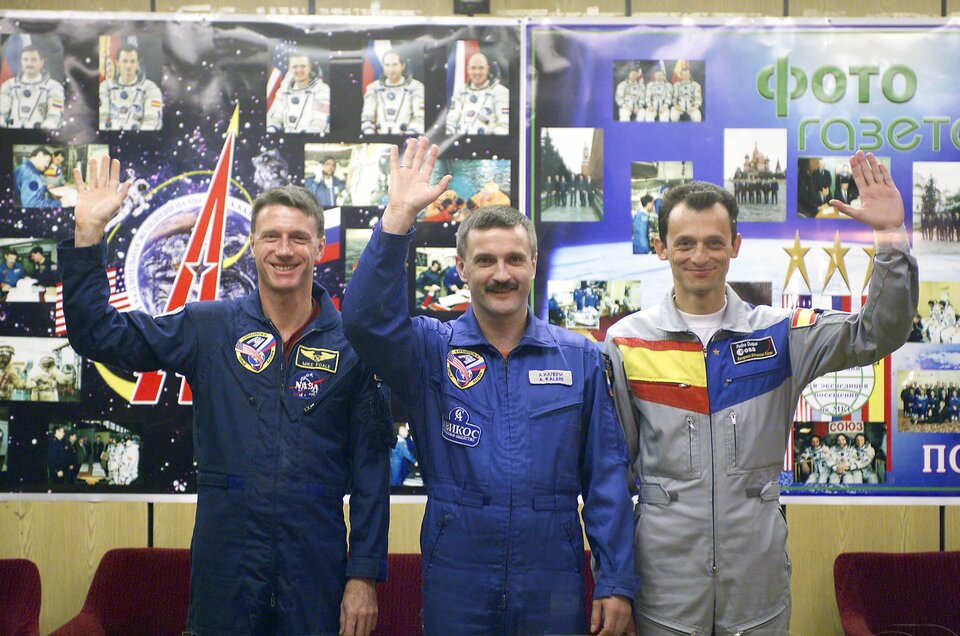ESA astronaut flies Cervantes mission to ISS
ESA PR 68-2003. The Cervantes mission, with European Space Agency astronaut Pedro Duque, and the ISS Expedition 8 crew lifted off today in Soyuz TMA-3 on flight 7S to the International Space Station. The launch took place from the Baikonur Cosmodrome in Kazakhstan at 11.38 local time (07.38 Central European Summer Time).
Once in orbit it will take Duque and the two other crew members on board, Russian cosmonaut Alexander Kaleri and NASA astronaut Michael Foale, about two days to reach the International Space Station (ISS). Docking is due at 09:17 CEST on 20 October, with the hatch opening at 12:14.

Duque will be Flight Engineer on the Soyuz TMA-3, taking an active role alongside Kaleri, the Commander, in piloting and docking the spacecraft. This is the third Soyuz TMA flight, the first having been in October 2002 with ESA astronaut Frank De Winne from Belgium on board. Soyuz TMA-3 will replace Soyuz TMA-2, currently docked with the ISS, and remain there with the Expedition 8 crew, Kaleri and Foale, for approximately six months as an emergency lifeboat.
Duque becomes the sixth European astronaut to visit the ISS, and the first from Spain. During his eight-day stay, he will carry out an extensive experiment programme in the fields of life and physical sciences, Earth observation, education and technology. This will include use of the Microgravity Science Glovebox, a research facility developed in Europe.
“A trip into space is not something you can do every day”, said Duque, “so I am determined to use every moment to the fullest and perform the various experiments as proficiently as possible. I am proud to be representing almost 40 million Spanish citizens”.

The Cervantes mission was originally planned for April this year, but in the aftermath of the Columbia accident ESA gave up that flight opportunity to make a crew exchange flight possible. This mission is Duque's second spaceflight. He flew as Mission Specialist on the Space Shuttle Discovery on the STS-95 mission (29 October to 7 November 1998), dedicated to solar research.
The Cervantes mission concludes with the return flight on 28 October with Duque as Flight Engineer on Soyuz TMA-2. He will be accompanied by the ISS Expedition 7 crew, Yuri Malenchenko and Edward Lu, who are being replaced by Kaleri and Foale. Malenchenko and Lu arrived at the ISS on 28 April in Soyuz TMA-2.
For further information, please contact:
ESA Media Relations Service
Tel: +33 (0)1.5369.7155
Fax: +33 (0)1.5369.7690
You can follow the progress of the Cervantes mission, read Pedro Duque's diary and see selected events at http://www.esa.int/cervantes





